Your monthly update on legislation, guidance, interesting news articles, and webinars from the environmental sector.
Legal Updates
The Environment Act 2021 (Commencement No.10) Regulations 2025
The Environment Act 2021 has been amended to introduce biodiversity gain requirements as a condition for granting planning permission, which came into effect on 1st May 2025. The following sections of the Act has been amended.
- Section 98 (biodiversity gain as a condition of planning permission)
- Certain parts of Schedule 14 (biodiversity gain as a condition of planning permission).
Source: The Compliance People
For the full legislation, click here.
The Levelling-up and Regeneration Act 2023 (Commencement No.7) Regulations 2025
Changes to the Town and Country Planning Act 1990 made by the Levelling-up and Regeneration Act 2023 in relation to Crown developments in England (planning applications for developments on land owned by the Crown) came into effect from 1st May 2025.
Source: The Compliance PeopleFor the full legislation, click here.
Guidance
Monitoring stack emissions: techniques and standards for periodic monitoring
The guidance was originally published on 18th December 2019. The Environment Agency (EA) has structured the guidance to help you choose an appropriate periodic monitoring technique and standard. The guidance was formerly part of the M2 guidance document.
The EA has produced method implementation documents (MIDs) for several standards to make sure they are applied consistently. The MID will be next to the relevant standard. Substances are listed in alphabetical order.
Monitoring standards for carbon disulfide, carbonyl sulphide, formaldehyde, mercury and metals have been updated and monitoring methods for per and polyfluorinated alkyl substances and volatile fluorinated compounds added.
Source: GOV.UK
To read the full guidance, click here.
Extended producer responsibility for packaging: who is affected and what to do
The guidance was originally published on 7th June 2022. The guidance includes additional instruction on small producers.
A ‘small producer’ is an organisation that either:
- has an annual turnover of more than £1 million and up to £2 million and supplies more than 25 tonnes of packaging in the United Kingdom (UK),
- has an annual turnover of more than £1 million and supplies more than 25 tonnes and no more than 50 tonnes of packaging in the UK.
Businesses over these thresholds are ‘large producers’ and they have different rules and reporting requirements.
As a small producer, you must keep records about:
- your ‘packaging activities’ – for example selling, filling or importing packaging,
- the ‘class’ of any packaging – for example, packaging for a single sales unit like a crisp packet or packaging for grouping several sales units, like a box for holding many packets of crisps,
- what your waste packaging is made of – the ‘packaging material’,
- the weight of each packaging material that you are reporting, in kilograms.
Each of the first three has a fixed set of categories and codes that you will use to report. You must understand these before recording and reporting.
You must report this data once a year. The annual deadline is 1st April for waste packaging produced in the previous calendar year. Packaging data for January to December 2025 is to be reported by April 2026.
Source: GOV.UK
For the full guidance, click here.
Recyclability assessment methodology: how to assess your packaging waste
The guidance has been updated to clarify the substances listed in the section on ‘automatic reds’ (problematic packaging) must have been added intentionally.
Some packaging and components of packaging always count as red on the scale. Items of packaging or components must be classed as red if they contain any of the following above the limit of detection and they have been intentionally added:
- Integrated electrical components or batteries that would be classed as Electrical and Electronic Equipment (EEE), for example boxes that include LED lights.
- Any of the Substances of Very High Concern (SVHC) above the specified thresholds set out under the United Kingdom Registration, Evaluation, Authorisation and Restriction of Chemicals (UK REACH).
- Inks that are not manufactured in compliance with the European Printing Ink Association’s Exclusion Policy for Printing Inks and Related products.
- Any household packaging within scope of the Recyclability Assessment Methodology (RAM) which has not been assessed or where the detail required to undertake an assessment isn’t available.
If perfluoroalkyl and Polyfluoroalkyl Substances (PFAS) have been intentionally added to packaging, this is also an automatic red. However, this does not apply if the predominant material is aluminium, steel or glass.
Full details of how fees will be modulated will be published in 2025.
Source: GOV.UK
For the full guidance, click here.
Waste codes you can accept instead of those ending in 99: RPS 241
This Regulatory Position Statement (RPS) applies to environmental permits and waste exemptions which have waste codes ending in 99. It allows operators to accept the same wastes but with different and more accurate waste coding, as set out in Appendix 1 of the RPS.
This RPS also applies to holders of bespoke permits that may have ‘99’ waste codes listed.
The RPS does not change your legal requirement to comply with an environmental permit for a waste operation or a registered waste exemption and the waste codes you are allowed to accept.
However, the EA will not normally take enforcement action against you if do not comply with these legal requirements provided that:
- your activity meets the description set out in this RPS,
- you comply with the conditions set out in this RPS,
In addition, your activity must not cause (or be likely to cause) pollution of the environment or harm to human health, and must not:
- cause a risk to water, air, soil, plants or animals,
- cause a nuisance through noise or odours,
- adversely affect the countryside or places of special interest.
You must:
- comply with the requirements in your specified environmental permit or waste exemption,
- only accept wastes with codes set out in Appendix 1 of the RPS, as a replacement to waste codes ending in 99,
- keep records for 2 years from the date of the last use of the RPS to show that you have complied with this RPS and make these records available to the EA on request.
The EA is replacing waste codes ending in ‘99’ with the six-digit code as descriptions listed in this RSP. Once complete, this RPS will no longer be required. The EA can amend or withdraw this RPS before the review date if they consider it necessary. This includes where the activity that this RPS relates to had not changed.
Appendix 1: List of waste codes you can accept instead of waste codes ending in 99
The following examples of the waste codes listed in Appendix 1 of the RPS are:
02 01 99: milk from agricultural premises only, found in:
- SR2010 No 4: mobile plant for landspreading
- SR2010 No 17: storage of wastes to be used in land treatment
- U10 waste exemption: spreading waste to benefit agricultural land.
You can accept the waste code and description 16 10 02: milk from agricultural premises other than those mentioned in 16 10 01.
The waste must originate from the Waste Classification Technical guidance (WM3) 02 01 sub chapter: waste from agricultural, horticultural, aquaculture, forestry, hunting and fishing.
02 01 99: untreated wash water from cleaning fruit and vegetables on farms only, found in:
- SR2010 No 4: mobile plant for landspreading
- SR2010 No 17: storage of wastes to be used in land treatment
- U10 waste exemption: spreading waste to benefit agricultural land.
You can accept the waste code and description 16 10 02: untreated wash water from cleaning fruit and vegetables on farms other than those mentioned in 16 10 01.
The waste must originate from WM3 02 01 sub-chapter: wastes from agriculture, horticulture, aquaculture, forestry, hunting and fishing.
02 01 99: fully biodegradable animal bedding, found in:
- T23 waste exemption: aerobic composting and associated prior treatment
- T24 waste exemption: anaerobic digestion at premises used for agriculture and burning resulting biogas
- T25 waste exemption: anaerobic digestion at premises not used for agriculture and burning resulting biogas.
You can accept the waste code and description 02 01 06:fully biodegradable animal bedding
The EA will review this RPS by 31st May 2028.
Source: GOV.UK
For full details of the RPS, click here.
Simpler recycling: workplace recycling in England
The rules for workplace recycling in England changed on 31st March 2025. This guidance is for all businesses, charities and public sector organisations on the separation of recyclable wastes.
The guidance has been updated to include guidance on contaminated recyclable waste and clarifies that cooking oil can either be collected with food waste or through a used cooling oil collection.
Micro-firms with fewer than ten full-time equivalent employees have until 31st March 2027 to comply. Contractors, self-employed workers and volunteers do not count towards the total number of employees.
Source: GOV.UK
For the full guidance, click here.
Single-use vapes ban: what businesses need to do
This guidance was originally published on 20th January 2025. As from the 1st June 2025 it is illegal for businesses to sell or supply single-use vapes. It is also illegal to offer to sell or supply single-use vapes, or to stock single-use vapes that you plan to sell or supply. Single-use vapes are also known as disposable vapes.
The ban applies to:
- Sales online and in shops
- All vapes whether or not they contain nicotine.
Recycling of any leftover stock of single-use vapes must be arranged from 1st June 2025. Reusable vapes can still be sold or supplied.
The ban applies to all businesses and organisations that sell or supply single-use vapes in the UK. This includes:
- retailers – such as convenience stores, market stalls, petrol stations, specialist vape shops and supermarkets
- manufacturers
- wholesalers
- importers
- healthcare settings and stop smoking services.
How the ban is enforces varies between the UK’s four nations and is specific to where your business operates.
Source: GOV.UK
For the full guidance, click here.
Articles
Mine water heat
The Mining Remediation Authority (MRA) works with others to unlock the heat within historical coal mine networks to transform the homes and workplaces of the future. The MRA are exploring opportunities to use mine water to heat and cool homes and businesses. Water within the mines is warmed by natural processes and can, if sustainably managed, provide a continuous supply of heat. Mine water temperatures are not affected by seasonal variations and, if subject to the right support, can provide renewable, secure, low carbon heating for buildings in coalfield areas.
The MRA is working with academics, local authorities, central government and others, to realise the potential of mine water heat, by supporting the delivery of mine water projects.
There are extensive coalfields across Great Britain, and it is estimated that 25% of homes and businesses in the UK are located above former coal mines. The MRA and British Geological Survey (BGS) has released an interactive map showing the estimated mine water temperatures within British Coalfields in 2020 to understand the potential for mine water heat.
Mine water gets warmer the deeper it is, following a ‘geothermal gradient’. Temperatures range from 10 to 20 degrees Celsius and can reach up to 40 degrees at depths of around one kilometre. Mine water can be abstracted from boreholes, shafts or adits (an entrance to an underground mine). Heat exchangers and pumps are used to recover the heat, which is distributed via district networks to homes and buildings.
The Lindsay mine water heat scheme in Carmarthenshire is one of the first in Wales to harness mine water heat for a commercial facility.
The scheme, developed in partnership between the MRA and Thermal Earth Ltd, uses submerged heat exchangers in a settlement pond to recover warmth and provide secure, low-carbon heat source to a local industrial unit.
The project, funded through UK’s Net Zero Industry programme, highlights the potential of mine water heat to support Wales’ transition to renewable energy. The Lindsay mine water heat scheme has been operational since March 2025 and is expected to significantly reduce carbon emissions and serve as a model for future schemes.
Source: GOV.UK
For the full article, click here.
A quick scoping review of airborne perfluorooctanoic acid (PFOA) and other per-and polyfluoroalkyl substances (PFAS)
This review provides an insight into the sources, transport, concentrations, dispersion, deposition and estimation of airborne perfluorooctanoic acid (PFOA) and other per- and polyfluoroalkyl substances, and has identified gaps in knowledge. The report is a summary relating to a project delivered by the EA’s Chief Scientist’s Group, which provides scientific knowledge, tools and techniques to enable the EA to protect and manage the environment as effectively as possible.
Source: GOV.UK
For the full article, click here.
Enforcement Action
Leeds man arrested in recycling fraud investigation
As part of an active EA investigation into illegal recycling export paperwork, a Leeds local man has been arrested for conspiracy to commit money laundering.
A joint raid was carried out in May 2025. EA officers worked with the Yorkshire and Humberside Regional Organised Crimes Unit to apprehend a 34-year old man at a property in Leeds.
After being interviewed, the suspect was released pending ongoing investigations and evidence gathering, which will support action going forward.
The arrest forms a crucial part of an ongoing investigation by the EA and Joint Unit for Waste Crime into fraud, money laundering and offences under the producer responsibility regulations. This brings the total number of arrests to seven, after four individuals across Leeds, Doncaster and Calderdale were arrested in April 2024, and two others arrested in 2023.
The Packaging Producer Responsibility Regulations were introduced to oblige the producers of waster packaging made from materials such as plastics, glass and cardboard to contribute towards the financial costs of recycling and disposing of the waste.
Source: GOV.UK
For the full article, click here.
Environmental Monitoring Solutions Services
Environmental legal compliance support service
As legislation surrounding environmental management becomes more complex, our team of environmental experts can give you peace of mind that your environmental legal responsibilities are being met.
Our service offers:
- A quarterly report, emailed to nominated personnel, containing information on new and amended legislation, as well as news, guidance, consultations, case law, prosecutions and expert commentary.
- A set number of hours of consultancy support delivered in various formats – email, phone, site visit, etc.
- Snapshot environmental audit to review site operations against legal requirements and an associated compliance action plan.
- Quarterly legal register updates on new, amended or revoked legislation which will be made available in easily digestible summaries with explicit commentary on how to maintain compliance.
- Discounts on accredited and non-accredited environmental training courses provided by our practicing environmental consultants.
Our subscription service is available in three different formats: bronze, silver and gold. However, if your business’ requirements do not perfectly align with one of our packages, we can amend the package to meet the needs of your business.
We review and update clients’ existing legal registers quarterly to ensure the legislation remains applicable to their operations. This proactive approach helps clients stay informed about current regulatory requirements and prepared for any pending legislation that may impact their business.
All our environmental consultants have extensive knowledge of various industry sectors and established relationships with regulatory bodies, providing assurance that the advice and guidance you receive is informed and up to date. By utilising our team of experts, your business will experience numerous benefits:
- Maintaining environmental legal compliance and keeping an up-to-date legal register – What is environmental compliance and why is it so important?
- Compliance with Clauses 6.1.3 and 9.1.2 of ISO 14001:2015 (where an accredited Environmental Management System is in place).
- Consistent guidance and support from a dedicated environmental consultant with further access to the EMS Advisory Team.
- Continuous environmental improvement and proactive environmental management leading to potential cost savings due to increases in efficiencies.
- Knowledge and insight into industry best practice and environmental events (webinars, seminars, expos, etc.).
As practicing environmental consultants, we understand that it is not a one-size-fits-all approach when it comes to maintaining compliance, as each business will have different requirements. In order to ensure we are meeting the needs of your business, we have aimed to make this service as flexible as possible. Therefore, if you think this service would better suit your business with one or two adjustments let us know. For example, some of our existing customers utilise the time allotted to the snapshot environmental audit as extra consultancy support time to help develop their Environmental Management System or close-out actions from their own internal environmental audits.
For further information, click here
Consultations
Proposed updates to the Environment Agency’s enforcement and sanctions policy to include the Clean Heat Market Mechanism
Consultation open from 22nd April – 15th July 2025
In November 2024, the Department for Energy Security and Net Zero laid the Statutory Instrument (Clean Heat Market Mechanism Regulation 2025) which created the Clean Heat Market Mechanism.
The EA have been appointed as the Scheme Administrator for the Clean Heat Market Mechanism. As part of this role, they will be responsible for ensuring companies comply with their obligations under the scheme and take action where they do not. This will include applying criminal and civil penalties set out in the Statutory Instrument.
As the Clean Heat Market Mechanism is a new scheme, they will need to update Annex 2 of the enforcement and sanctions policy which sets out the EA approach to applying climate change civil penalties. For more information about the scheme see guidance on Clean Heat Market Mechanism: who it applies to, annual tasks.
The EA wants your views on the following two aspects which are specific to the Clean Heat Market Mechanism: namely, the nature of the daily penalties and how these will be applied, and the discretion applied to some penalties. Read the consultation document to see these proposals in full. The consultation is not considering any policy requirements as these have already been approved by Parliament.
Source: GOV.UK
For more information and to comment on the scheme, click here.
Environmental Performance Assessment Scheme (EPAS) – a fair way to report performance
Consultation open from 31st March – 30th June 2025
The Scottish Environment Protection Agency (SEPA) are consulting on a new way of assessing environmental performance, that is designed to drive quick action to resolve issues that could cause harm to communities and nature. SEPA are proposing a responsive scheme that is transparent about when SEPA have checked compliance and what this means for environmental performance. The consultation sets out SEPAs proposal for EPAS.
Source: SEPA.org.uk
For the consultation documents, click here.
Events
South West: Insurance Mechanisms for Ecosystem Protection
Friday 20th June 2025 12:30 PM – 13.30 PM BST Webinar
Join the Institute of Environmental Management and Assessment (IEMA) South West for an engaging webinar on Insurance Mechanisms for Ecosystem Protection.
Insurance traditionally serves as a financial safeguard, covering business losses and facilitating the restoration of land or property after damage. But in the context of biodiversity and conservation, insurance is emerging as a powerful tool to help protect our ecosystems, particularly our most sensitive and protected ecological sites. Ecosystems are increasingly under threat from five major drivers of biodiversity loss:
- Changes in land and sea use,
- Direct exploitation of organisms,
- Climate change,
- Pollution,
- Invasive alien species.
This insightful presentation explores how ecosystem owners and stewards can use insurance to protect against unexpected, acute ecosystem losses.
Source: IEMA







